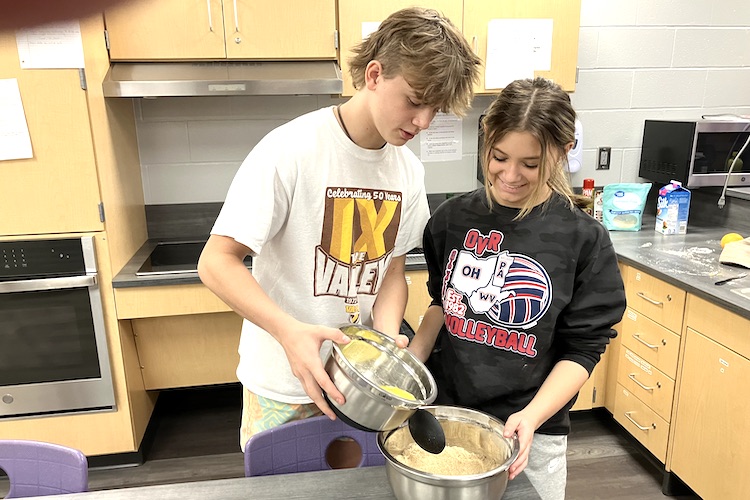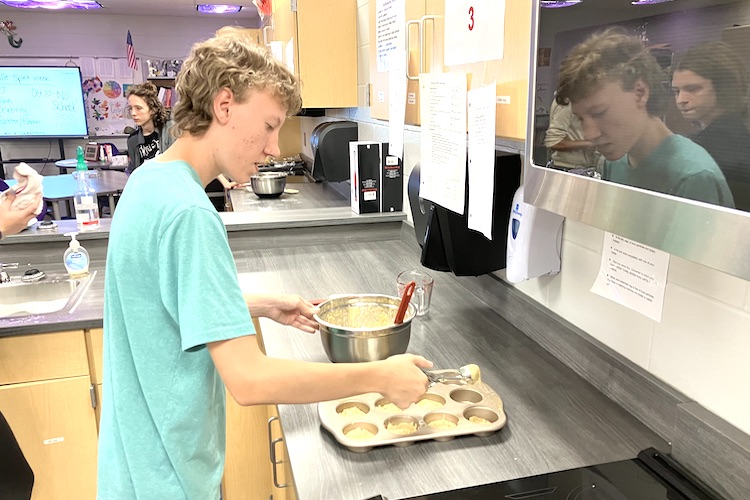HOWARD – Amber Carpenter gets right to the point with the students in her Principles of Food class at East Knox High School.
“I tell the students my basic rule is this: When I demonstrate something, pay attention, ask questions and take notes – good notes. I’m showing you what you need to do,” Carpenter said.
Most of her students probably won’t go on to culinary careers, but they’re learning kitchen skills to last a lifetime.
The class of cooking and baking focuses on nutrition, following recipes and proper measurements, while emphasizing safety, sanitation and correct use of kitchen tools.
Carpenter has been East Knox’s family consumer sciences teacher for nine years. Her one-semester elective classes also include Fashion, Career and College Readiness, Textiles and Interior Design. But the majority of her day is devoted to food.
Students who complete Principles of Food (there are two classes daily) may elect to go on to Culinary Fundamentals then Global Foods. After Global Foods, some students may opt to enroll in culinary arts at the Knox County Career Center.
“My Principles of Food class also teaches basic life skills – teamwork, communication, collaboration – and the kids don’t even realize it,” Carpenter said.
The classroom includes four kitchen units, each with an electric range, microwave, counter space and sink. Usually, four students work at each unit. Students have made orange muffins, homemade salsa, chicken pot pie cups (using canned chicken) and strawberry-banana smoothies. They will learn to make homemade mashed potatoes and bake apple bites to present appetizingly on a plate. Along the way they will learn how to halve and double recipes.
The orange muffin project required each group of students to substitute alternative ingredients to compensate for circumstances of egg allergies, gluten-free, and lactose intolerance. Students then sampled each other’s work, scoring them on appearance, color, aroma, texture and flavor before discussing how recipes could be improved.
Freshman Savannah Peffers said she likes to bake and cook at home. “I signed up for the course to learn more, and I thought it would be interesting to see how others cook,” she said.
Zach Rinebolt, also a freshman, said he helps in the kitchen at home. “I selected this course because I enjoy cooking. I get to take home some of the things that I bake,” he said.
While cooking and baking are the fun parts of class, Carpenter also emphasizes cleanliness.
“I give the kids advance warning that points will be taken off their scores if their kitchen area isn’t clean, including having the floor swept,” she said. Carpenter’s emphasis on paying attention and taking good notes was illustrated in a story she recalled – with a chuckle – about a class a few years ago.
The assignment was to bake an angel food cake. “I explained that they should use two bowls when preparing the eggs,” she said. “One bowl was for cracking the eggs and removing any pieces of broken shell before transferring the eggs to the second bowl.
“One group didn’t pay close attention. When they tasted their finished cake, they asked, “Why is it crunchy?”




